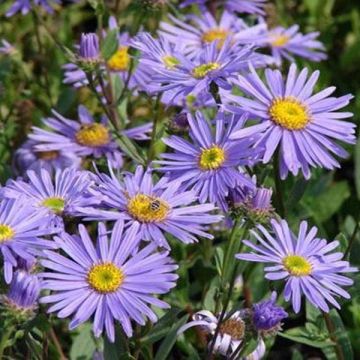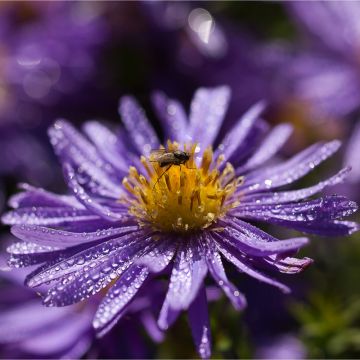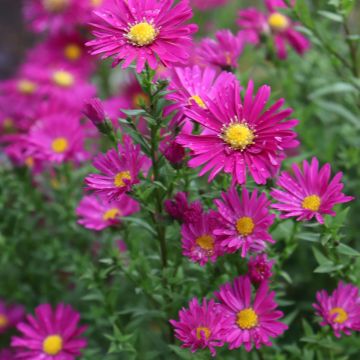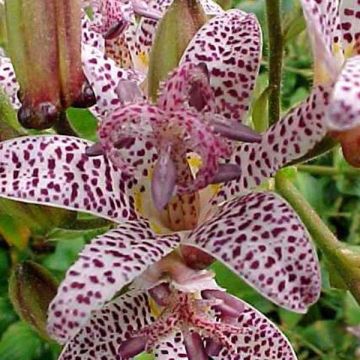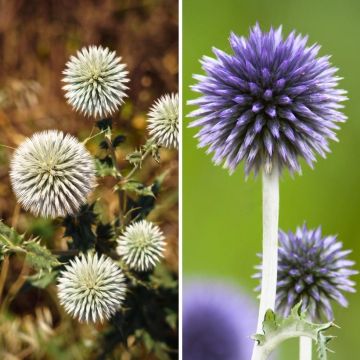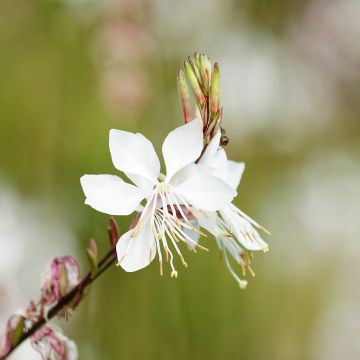

Aster turbinellus
Aster turbinellus
Aster turbinellus
Prairie Dock, Turbinate Aster, starwort
Fast delivery, careful packaging
Catherine B., 09/11/2018
This item cannot be shipped to the selected country
Delivery charge from €5.90
More information
Schedule delivery date,
and select date in basket
This plant carries a 12 months recovery warranty
More information
We guarantee the quality of our plants for a full growing cycle, and will replace at our expense any plant that fails to recover under normal climatic and planting conditions.
From €5.90 for pickup delivery and €6.90 for home delivery
Express home delivery from €8.90.

Does this plant fit my garden?
Set up your Plantfit profile →
Description
Aster turbinellus is a wild aster, its habit as an upright shrub gives a beautiful airy effect. It is adorned with small lavender heads around a yellow heart and is one of the last to bloom in the garden, for about three weeks in October-November. It thrives in full sun and adapts to all soils that are not too heavy, even dry ones. Perennial and very hardy, this aster with its subtle charm will be magnificent when combined with more sophisticated plants.
Asters belong to the asteraceae family. This species is native to dry prairies in the central and western United States. Aster turbinellus develops into an upright, spreading, open and bushy clump. It will reach a minimum height of 120 cm (47in) when in bloom and rapidly spread to 70 cm (28in). Bees and butterflies love the flowers from late September to early November, depending on the climate. The star-shaped heads are blue-mauve-lavender to light violet, their bright yellow heart is marked with purple and orange and measures 2 cm (1in) in diameter. The flowers transform into small tufts of bristly, tawny seeds, making this aster decorative in winter. The slender, branching stems are slightly hairy, pale grey when young turning brown with age. The foliage is dark green with blue highlights. The basal leaves are lanceolate and have smooth edges. In mature plants, the root system consists of a woody crown with fibrous roots on its underside. The plant occasionally produces rhizomes.
It is impossible to imagine our gardens without asters in their beds or borders. This one is particularly slender and very ornamental. It is a boon for wild gardens, large dry slopes, and the back of the garden that is never watered. It pairs very well with all kinds of border plants and accompanies the colours of autumn until the start of winter. We suggest the following combination: Aster turbinellus, Sedum 'Purple Emperor' and Penstemon 'Mother of Pearl'. The combination of colours, foliage, and textures is delightful, from summer to autumn. Group 3 or 5 plants of Aster turbinellus at the back of the border, where they will form a living and airy mass in the autumn light.
Report an error about the product description
Aster turbinellus in pictures
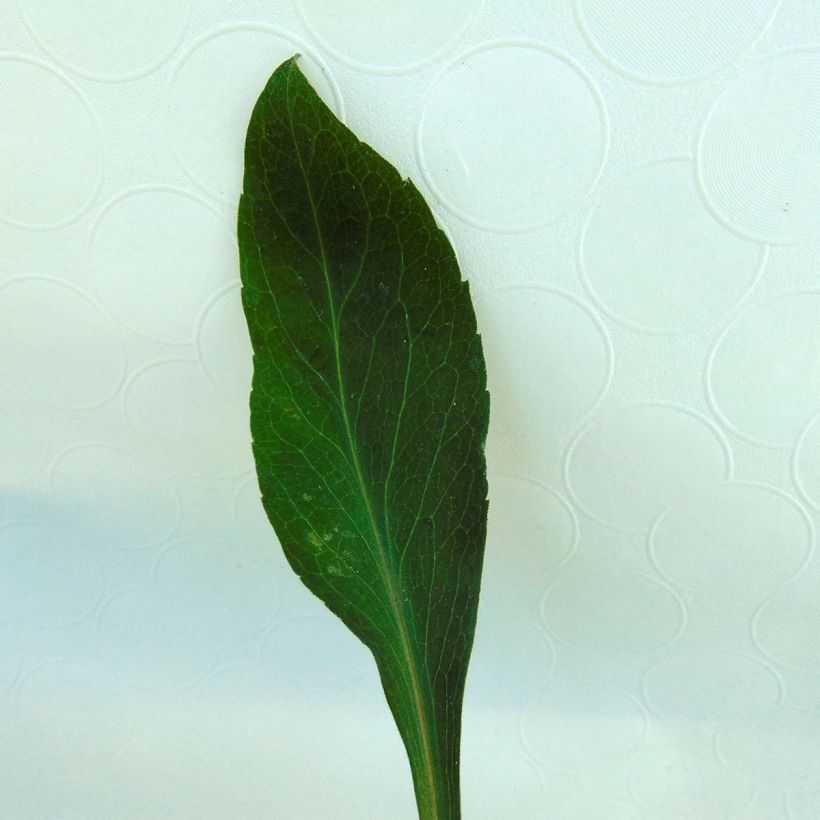

Flowering
Foliage
Plant habit
Botanical data
Aster
turbinellus
Asteraceae
Prairie Dock, Turbinate Aster, starwort
Symphyotrichum turbinellum
North America
Other Asters
Planting and care
Plant Aster turbinellus in autumn or spring in light, well-worked, moist to dry, but not too poor, ordinary soil. You can add some organic matter at the time of planting if your soil is rocky. Heavy and wet soil will shorten its lifespan. It enjoys full sun. Staking the plant is not necessary, but it should be planted in a sheltered spot, away from strong winds that would flatten the clumps, near a wall or dense hedge. Once established, avoid moving it as it does not appreciate this. Maintain a spacing of at least 80 cm (32in) between plants. Divide the clumps every three or four years to ensure they remain floriferous. Cut back the withered stems after flowering, or leave the seeds in place, as the plant will self-seed in light soil.
Planting period
Intended location
Care
-
, onOrder confirmed
Reply from on Promesse de fleurs
Late flowering perennials
Haven't found what you were looking for?
Hardiness is the lowest winter temperature a plant can endure without suffering serious damage or even dying. However, hardiness is affected by location (a sheltered area, such as a patio), protection (winter cover) and soil type (hardiness is improved by well-drained soil).

Photo Sharing Terms & Conditions
In order to encourage gardeners to interact and share their experiences, Promesse de fleurs offers various media enabling content to be uploaded onto its Site - in particular via the ‘Photo sharing’ module.
The User agrees to refrain from:
- Posting any content that is illegal, prejudicial, insulting, racist, inciteful to hatred, revisionist, contrary to public decency, that infringes on privacy or on the privacy rights of third parties, in particular the publicity rights of persons and goods, intellectual property rights, or the right to privacy.
- Submitting content on behalf of a third party;
- Impersonate the identity of a third party and/or publish any personal information about a third party;
In general, the User undertakes to refrain from any unethical behaviour.
All Content (in particular text, comments, files, images, photos, videos, creative works, etc.), which may be subject to property or intellectual property rights, image or other private rights, shall remain the property of the User, subject to the limited rights granted by the terms of the licence granted by Promesse de fleurs as stated below. Users are at liberty to publish or not to publish such Content on the Site, notably via the ‘Photo Sharing’ facility, and accept that this Content shall be made public and freely accessible, notably on the Internet.
Users further acknowledge, undertake to have ,and guarantee that they hold all necessary rights and permissions to publish such material on the Site, in particular with regard to the legislation in force pertaining to any privacy, property, intellectual property, image, or contractual rights, or rights of any other nature. By publishing such Content on the Site, Users acknowledge accepting full liability as publishers of the Content within the meaning of the law, and grant Promesse de fleurs, free of charge, an inclusive, worldwide licence for the said Content for the entire duration of its publication, including all reproduction, representation, up/downloading, displaying, performing, transmission, and storage rights.
Users also grant permission for their name to be linked to the Content and accept that this link may not always be made available.
By engaging in posting material, Users consent to their Content becoming automatically accessible on the Internet, in particular on other sites and/or blogs and/or web pages of the Promesse de fleurs site, including in particular social pages and the Promesse de fleurs catalogue.
Users may secure the removal of entrusted content free of charge by issuing a simple request via our contact form.
The flowering period indicated on our website applies to countries and regions located in USDA zone 8 (France, the United Kingdom, Ireland, the Netherlands, etc.)
It will vary according to where you live:
- In zones 9 to 10 (Italy, Spain, Greece, etc.), flowering will occur about 2 to 4 weeks earlier.
- In zones 6 to 7 (Germany, Poland, Slovenia, and lower mountainous regions), flowering will be delayed by 2 to 3 weeks.
- In zone 5 (Central Europe, Scandinavia), blooming will be delayed by 3 to 5 weeks.
In temperate climates, pruning of spring-flowering shrubs (forsythia, spireas, etc.) should be done just after flowering.
Pruning of summer-flowering shrubs (Indian Lilac, Perovskia, etc.) can be done in winter or spring.
In cold regions as well as with frost-sensitive plants, avoid pruning too early when severe frosts may still occur.
The planting period indicated on our website applies to countries and regions located in USDA zone 8 (France, United Kingdom, Ireland, Netherlands).
It will vary according to where you live:
- In Mediterranean zones (Marseille, Madrid, Milan, etc.), autumn and winter are the best planting periods.
- In continental zones (Strasbourg, Munich, Vienna, etc.), delay planting by 2 to 3 weeks in spring and bring it forward by 2 to 4 weeks in autumn.
- In mountainous regions (the Alps, Pyrenees, Carpathians, etc.), it is best to plant in late spring (May-June) or late summer (August-September).
The harvesting period indicated on our website applies to countries and regions in USDA zone 8 (France, England, Ireland, the Netherlands).
In colder areas (Scandinavia, Poland, Austria...) fruit and vegetable harvests are likely to be delayed by 3-4 weeks.
In warmer areas (Italy, Spain, Greece, etc.), harvesting will probably take place earlier, depending on weather conditions.
The sowing periods indicated on our website apply to countries and regions within USDA Zone 8 (France, UK, Ireland, Netherlands).
In colder areas (Scandinavia, Poland, Austria...), delay any outdoor sowing by 3-4 weeks, or sow under glass.
In warmer climes (Italy, Spain, Greece, etc.), bring outdoor sowing forward by a few weeks.


































